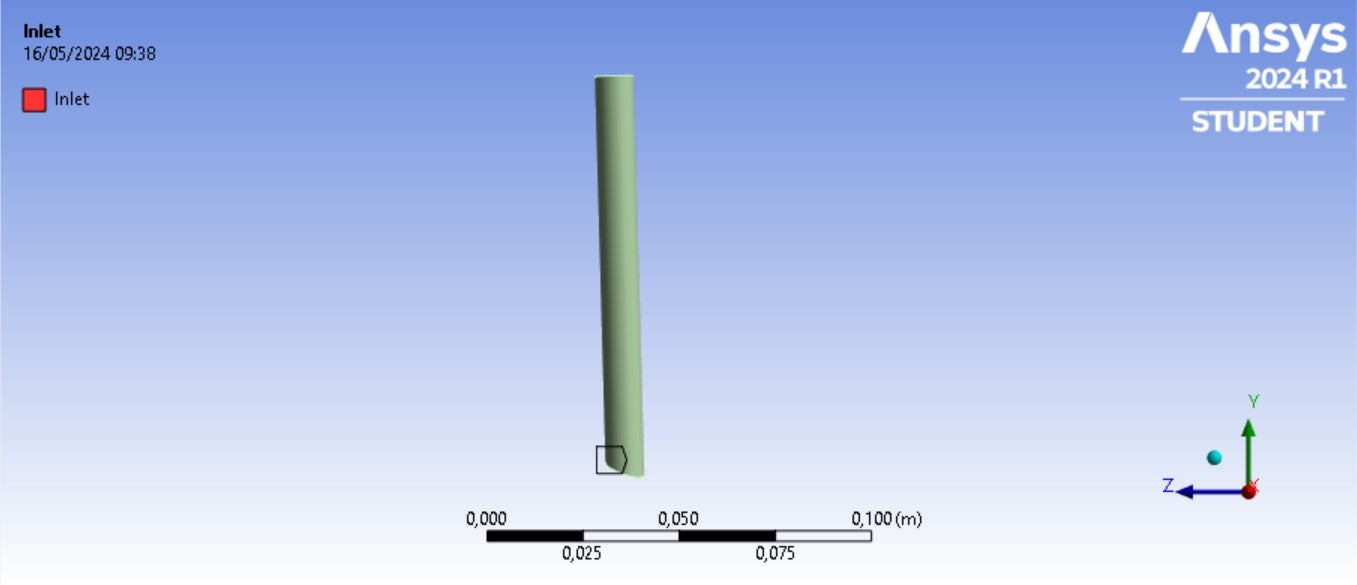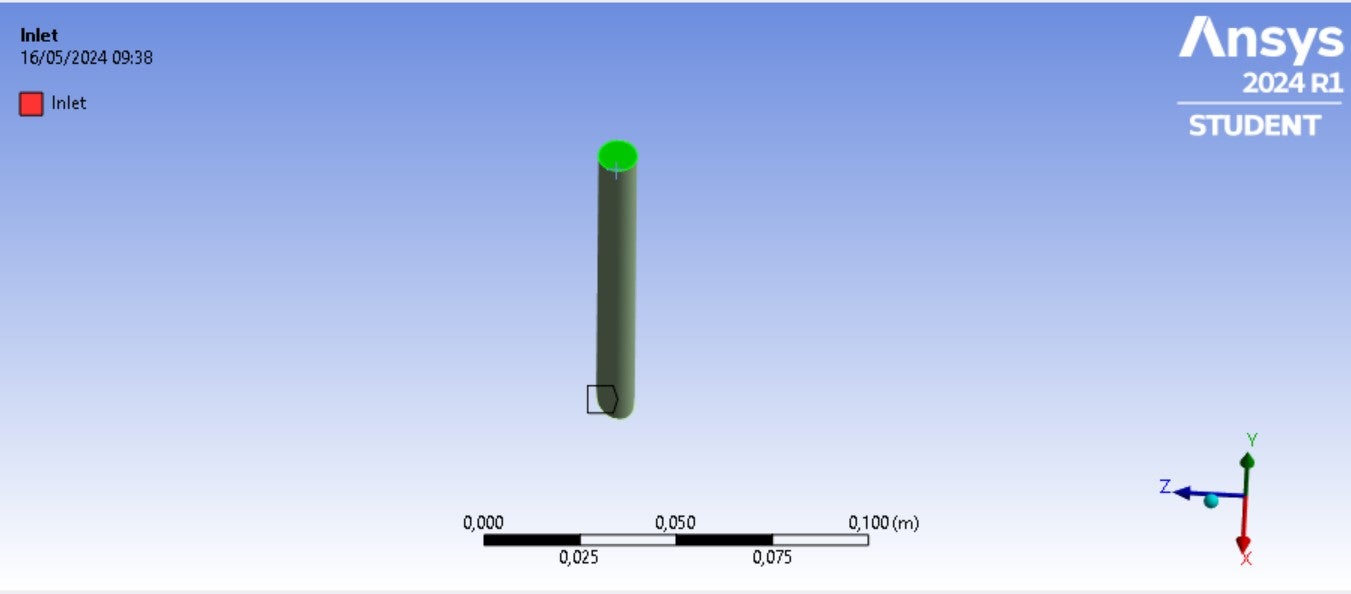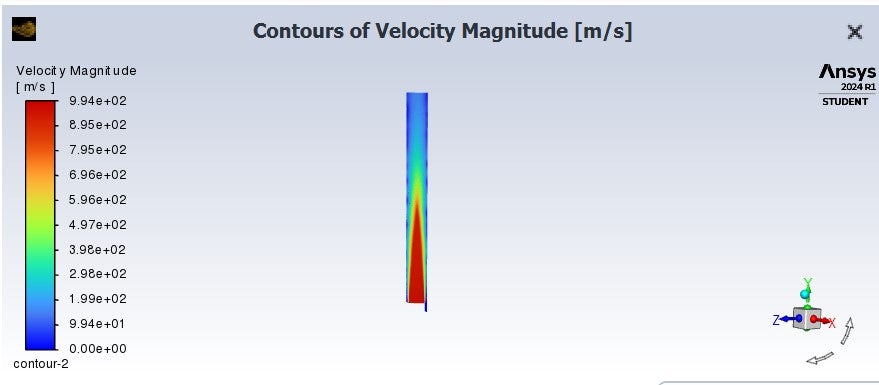-
-
May 16, 2024 at 8:10 am
N. M.
SubscriberHello Everyone,
I am simulating a case with a cylindrical fluid environment. The environment is initially filled with air. At one end of the cylindrical environment (the one inclined, Figure 1), there is a hole from which hydrogen exits at a very high velocity (950 m/s). This hole is the inlet of the fluid domain and is parallel to the opposite face of the cilindrical volume (Figure 2). However, the simulation provides incorrect results. Due to the high velocity of the exiting hydrogen, the hydrogen jet should still have a high velocity when it reaches the opposite end of the cylindrical environment. Instead, the results show that the hydrogen jet decreases its velocity over a very short distance (Figure 3). What could be the problem? I have set the lateral face and the end opposite the inlet as outlet-pressure. I am using a Species Transport model with a hydrogen-air mixture. I have set the mixture and the air as Ideal Gases and set the operating density to 0, as suggested by Fluent.
Are there other important aspects that I should consider for this simulation?
Thank you ????.
-
May 16, 2024 at 11:25 am
Rob
Forum ModeratorThat's odd. How is the convergence looking?
-
- The topic ‘How to model a species transport case’ is closed to new replies.



-
4673
-
1565
-
1386
-
1231
-
1021

© 2025 Copyright ANSYS, Inc. All rights reserved.










